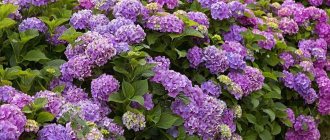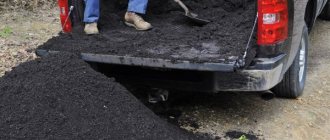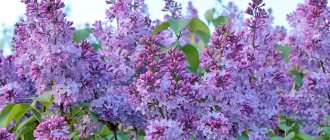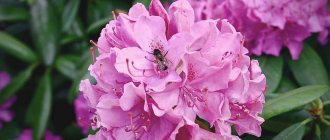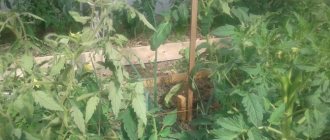The main reasons why dill does not sprout and grow in the garden?
Dill is an annual plant. Every year we have to sow new beds in order to use fresh herbs for cooking throughout the season. But in some cases, dill grows poorly, although there are no apparent reasons for this.
Reasons why it grows poorly on the site:
- Increased soil acidity.
- Infertile and poor soil.
- Bad seeds.
- Improper cultivation and care.
- Poor quality planting material.
- Incorrect seed planting technique.
- Adverse weather conditions.
- Excess or lack of nutrients in the soil.
All these factors lead to the fact that greens grow poorly or do not grow at all. Having solved the main reason why dill does not grow, you will be able to grow a good harvest and prepare fresh herbs for the winter.
How to understand that the growth of a crop in the garden has stopped?
Sometimes a gardener, examining the beds with dill, notices that the germination of the greens is late and uneven. Having reached a small height, the seedlings have stopped growing and stand in one pore. Later yellowish leaves and stems appear:
- stretch out;
- become thinner;
- turn pale.
Sometimes dill withers, acquires a reddish tint or becomes covered with a white coating. At the same time, it loses its taste:
- juiciness;
- aroma;
- as well as presentation.
Important!
There are a number of differences between early and late varieties of dill, the main one being the ripening period.
Early ripening varieties
Develops in 1-1.5 months (often faster). They have their drawbacks - they very quickly lose their presentation: they stretch out and bloom ahead of time.
They produce little green mass—on average six leaves—but they produce high-quality seed material.
With a lack of moisture, most often they form no more than 3-4 leaves , which significantly reduces not only the quantity, but also the quality of the crop.
Early varieties include:
- Gribovsky.
- An early miracle.
- Grenadier.
Late ripening varieties
The best varieties of dill to grow. They ripen for a relatively long time (2-2.5 months), but the quality is much higher.
These varieties have a more leafy rosette with 12-14 large leaves, which are located with a small gap on the stem. Due to this, the bush of such dill looks more squat and fluffy. It constantly produces young shoots with abundant aromatic greenery, so you can do without additional reseeding.
Advice
The harvest period is long and abundant, since dill does not form umbrellas for a very long time. However, the first cutting of young greenery occurs only 55-60 days after germination.
These varieties allow you to obtain aromatic greens throughout the season. The interval between sowings can be increased to 25 days , which is almost 2 times less than when growing at other times. Among these high-yielding varieties intended for repeated cutting, the following stand out:
- Alligator.
- Russian.
- Firework.
- Buyan et al.
Selecting a location
The first thing you need to start with when growing dill is choosing a place for the beds. The culture is one of the most unpretentious in the country and can be planted almost anywhere. The plant is cold-resistant; planting material begins to germinate at a temperature of +3 degrees.
See also
Description of diseases and pests of dill, treatment and control of themRead
Prefers to grow in open sunny areas. Greens need a lot of light for the sprouts to begin to sprout and develop normally. The stems and leaves acquire a beautiful emerald hue and a strong aroma. Ideal conditions are when plants are in the sun for at least 12 hours.
The second important factor is fertile soil. On poor soils, dill does not sprout and develop well. If the soil is infertile, then mineral or organic fertilizers are applied to the ground before planting.
What to do to stimulate the growth of culture in the country?
Before sowing, you need to dig up the ground. As a rule, the soil is prepared in autumn or spring.
Feeding
To obtain a high-quality harvest, experienced gardeners advise feeding the soil before sowing. Soil acidity should be between 6.5 and 7. The following fertilizers are applied:
- half a bucket of humus per 1 sq. m;
- mineral fertilizing: 20 g of potassium salt and urea, 30 g of superphosphate for each square meter of sown area.
For subsequent fertilizing, use nettle:
- fill the bucket with this plant;
- pour boiling water and leave in the sun for a week, stirring daily;
- the concentrated liquid is mixed with water in a ratio of 1:10 and the beds are watered once every two weeks.
Important!
Approximately half a month after sowing, nitrogen fertilizers (saltpeter) are used in proportions of 10 g per 1 square meter. m.
Proper watering
The culture requires frequent and abundant watering. With a lack of moisture, the leaves turn yellow and the taste deteriorates. In dry weather, dill is watered 2 times a day. The norm for growing in open ground is 10 liters per square meter. m. But, most importantly, do not overdo it, the spice can simply rot and die.
Disease and pest control
Dill is endowed with good immunity, which has been passed on to selectively bred varieties and hybrids. But there are factors that contribute to the occurrence of diseases:
- Powdery mildew. It develops at high humidity (70% or more) and temperatures low enough for summer (17–20ºС). A whitish coating appears on the affected plants. Damaged tissues dry out and die. Preventive treatments are carried out with a solution of colloidal sulfur (3-5 g/l) once every 1.5-2 weeks. Effective drugs: Trichodermin, Mikosan-V.
- Blackleg. The disease is caused by increased soil acidity and humidity. Treatment is carried out with Fitosporin or Fundazol in accordance with the instructions.
- Fusarium wilt. Occurs due to excessive watering and high temperatures. In the initial stage of the disease, the use of Fundazol or Topsin is effective.
- Aphid. Spray the stems of tomatoes or potatoes with a decoction (boil for 30 minutes). Laundry soap (30 g per 10 l) is added to the decoction.
- Fleas. In case of flea infestation, spray with Fitosporin.
Proper agricultural technology
Attention!
It is very important to observe crop rotation. The crop should be grown in one bed for no more than 3 years. Then the crops are transferred to another place.
Other rules for growing a good dill crop:
- When sowing dill, you need to take into account that the best predecessors for it are cucumbers, legumes, and potatoes.
- Soak the seeds in warm water for a day. The water is changed several times to wash out the essential oils that inhibit germination. After this, the planting material is dipped in a strong solution of potassium permanganate for two hours, then washed and dried.
- The best way to sow is to scatter the seeds onto a dug, well-moistened bed and lightly level it with a rake. When sowing in rows, furrows are laid at a distance of 25-30 cm, the seeds are buried by 2 cm, no more.
- Loosening the soil. Moisture and air penetrate much better into loose soil, therefore, the dill rhizome will be provided with everything necessary.
- Good illumination of the bed. Practice shows that such greenery needs to receive light about 16 hours a day.
In the video below you can learn about the nuances of planting and growing dill in open ground:
Illumination of the area
For normal growth and development, dill needs to be in the sun most of the day. If there is not enough sunlight, the leaves begin to turn yellow and the stems become thin. Such greens are not suitable for consumption. Therefore, you should not make beds under the canopy of tall bushes and trees, but give preference to open sunny areas.
Bad Seeds
An important factor is the choice of planting material. If the seeds are of poor quality, then even if you observe all the necessary growing conditions, you will not be able to grow a good harvest. It is best to collect seeds from dill already grown on the site and store them properly until summer. They should not be exposed to moisture or lie in open sunlight.
Incorrect landing
Future productivity depends on the correct planting of seeds. Mistakes when planting seeds in open ground:
- Throw sprouted seeds vigorously into the soil. This damages the sprouts and prevents the seeds from germinating.
- Before planting the seeds, moisten the soil. It is not recommended to plant planting material in dry soil.
- Seeds need to be planted several times at intervals of 2 weeks.
- It is not recommended to make deep grooves for seeds.
- You should not use large amounts of fertilizer before planting dill.
Without making these mistakes during cultivation, problems with the growth of greenery will not arise.
See also
The best recipes for preparing dill for the winter, which one is best for preservation, how to preserve the aromaRead
Planting late varieties
Nettle is often used to feed dill
Late varieties of greens must be planted in the second half of spring or early summer. This should not be done in early spring and winter, as this may negatively affect their development.
Additional Information. Greens planted in May or June will not have time to form umbrellas. Thanks to this, it will be possible to grow lush green bushes with a huge amount of young foliage. Late varieties planted must be properly cared for so that they can grow faster. In summer they need to be watered daily with warm water. You will also have to regularly cut off the side stems and foliage in order to thin out the plantings at least a little. Such plants need to be fed with compost, superphosphate and ammonium nitrate.
Dill is a herb that can be found in almost any garden. When growing such a plant, some gardeners are faced with the fact that it grows poorly. Therefore, before planting, you need to figure out why dill does not sprout in open ground, and what to do to make it grow better.
Diseases and pests of dill
Common diseases of dill are powdery mildew, downy mildew, blackleg and fomoz. The plant begins to hurt when watered with cold water. If a white coating appears, the leaves begin to turn yellow, and the stem begins to rot, then it is necessary to urgently begin the fight against diseases.
The bushes are sprayed with a soap solution or soda diluted with water. Effective use of potassium permanganate.
Most often, aphids appear. To prevent the appearance of aphids, beds are made in open areas. It is not advisable to thicken the plantings too much. Marigolds should be planted nearby; chamomile or mallow will distract aphids from the dill. Aphids do not tolerate the odors of these plants and do not appear on dill.



